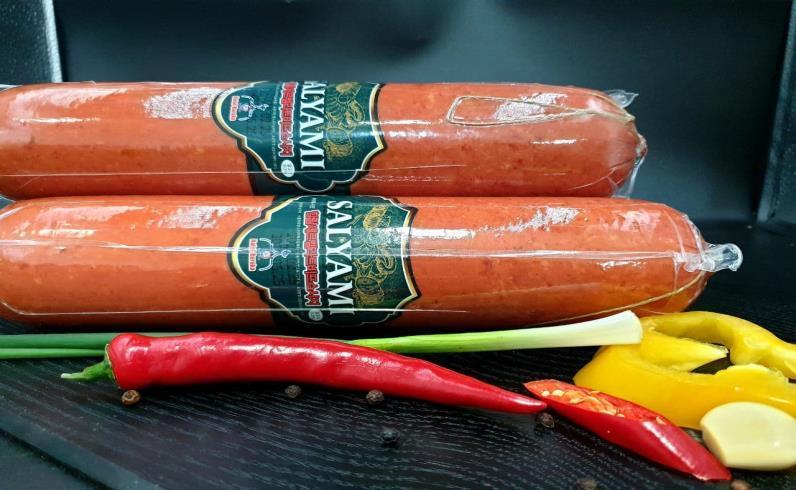SALYAMI
Salami sausage (from ital. salami-sausage) is a hard and raw-felted sausage, the meat of which can be taken from one or more animal species, with a lot of spices. Initially, salami sausage was invented in Hungary by peasants, and only later appeared in Italy. Traditionally, it is made from pork or beef, occasionally donkey meat is used. The meat is richly seasoned with aromatic spices, and then it is dried in the open air for 3 months, acquiring a denser consistency. A distinctive feature of salami is a thin layer of white mold, which indicates the exceptional quality of the product. There are different types of salami: Nostarno, Felino, Milano, Napoli, Hungarian, Genoese, Parma, Horse; differing in their qualities, type of meat, color and category of inclusions. Salami contains a large number of calories; therefore it does not belong to dietary products. Therefore, it is not recommended to eat sausage in large quantities. But this does not negate its useful properties such as regulating the metabolism of cholesterol in the body and hormonal activity, rapid recovery after physical exertion, stimulating the formation of bone tissue. In addition, salami is used in the preparation of salads, snacks, as well as first and second courses.
Ingredients: beef, poultry meat, beef fat, protein additives, garlic, nitrite-salt mixture, spices, acidity regulator E451, flavor enhancer E621, dye E124, dextrose. Store the salami in the refrigerator: the slice is tightly wrapped with foil, food wrap or parchment. In the refrigerator, if the packaging is damaged and the correct method of storage, it can lie for up to a week. And the intact packaging allows you to save the sausage even longer.

